It’s evident that all tires will tear, wear out, be damaged and finally, need replacing. Even a car expert cannot tell you exactly how long a tire lasts, as it is essential to base oneself on the specific situation of the tires to consider. In fact, numerous factors can affect the lifespan and mileage of a tire such as the kind of tire you own, road conditions, driving habits and more importantly, the way you take care of your tires.
Sadly, many drivers have never thought of their tires until they wear out and break suddenly on the road. It will be too late to lock the stable when the horse has already stolen.
Therefore, in order to avoid tire-related accidents, it’s absolutely vital to know the right time to replace your tires. Keep a close check on your tires regularly and when you see one of the following traces, you will know what to do.
>>> View related post: [Tire safety tips] How to prolong the lifespan of the tire?
6 warning signs that you need a tire replacement
- Tread wear bars. You can only see them when the tread depth has exceeded the recommended tread depth levels (normally 1.6 mm).
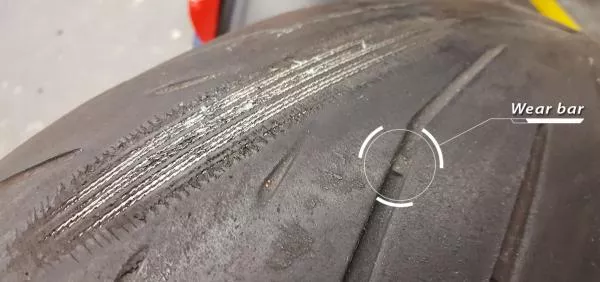
Tread wear bars
- Uneven wear patterns
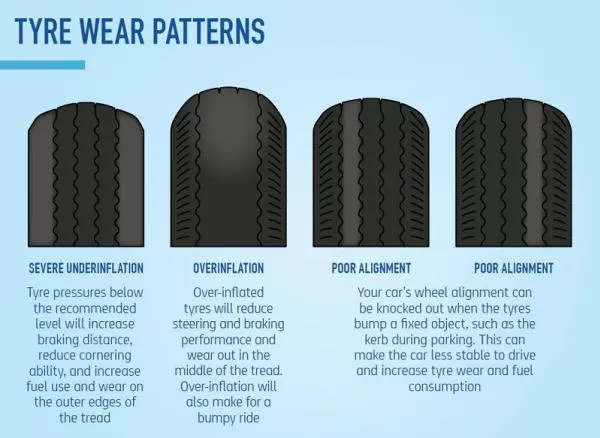
Tire wear patterns
- A bulge or blister on the tire’s sidewall: These can be found easily on your tires and detecting these signs means that the tires are seriously damaged and need changing immediately.
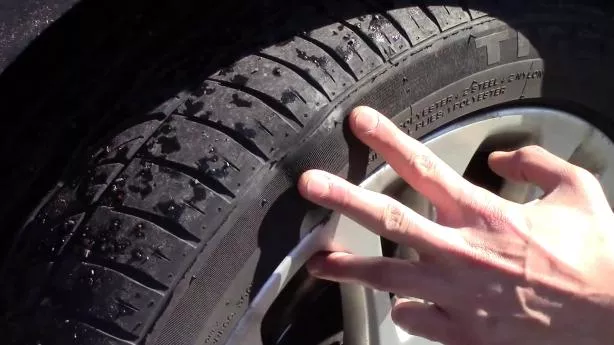
Blister on the tire’s sidewall
- A flat tire after a blowout

A flat tire
- Lacerations

Lacerations on the tire
- Big sidewall or tread punctures. Don’t nurture any ambitions of repairing punctures which are larger than 0.64 cm as well as tires worn below 1.6 mm.
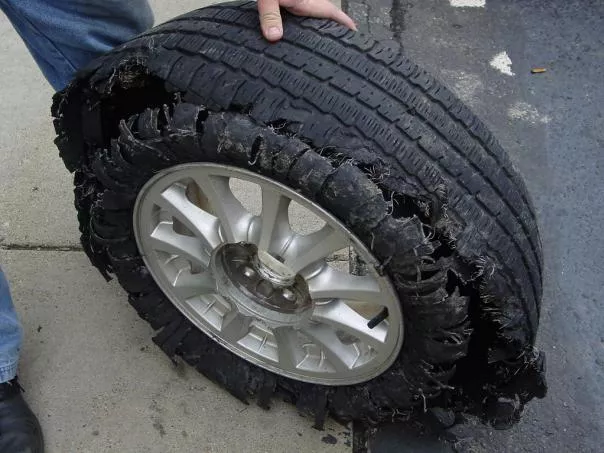
Big sidewall or tread punctures
>>> Related: 10 amazing uses of old tires you can try at home
Tips for buying replacement tires
Replace all four at once
As we mentioned in our previous articles of Tire safety tips series, it’s advisable to replace simultaneously all four tires. For the reason, it’s certain that you don’t want to leave your car with two new tires and the two old ones with mediocre traction.
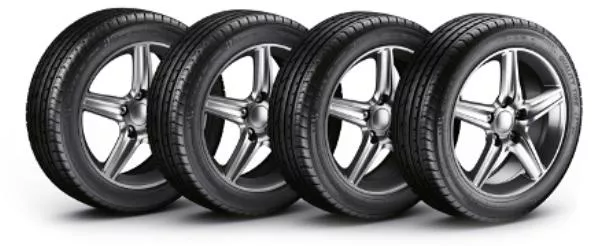
It’s advisable to replace simultaneously all four tires
If you’re on a tight budget, replacing two is ok but it’s better to ask for advice from car mechanics.
Buy suitable tires
Size, construction, speed ratings and other specs describe accurately the fundamental characteristics of your tire.
Don’t need to say any words if you decide to buy an all-new set of four tires. However, thoroughly find out your tires’ size, speed ratings and load-carrying capacity to ensure the new ones match the rest of tires in case you just replace one or two tires.
One more prior notice if you only buy two new tires is that you had better put them on the rear wheels for a better traction and stability as well when driving.
What’s more, it is compulsory to put the radials on the rear axle and never try to mix radials and non-radials (crossply tires) together.
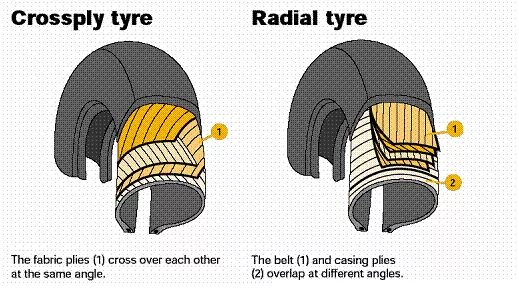
Never try to mix radials and non-radials together
Lastly, remember to consult car experts or mechanics before replacing your tires.
3 facts about tire you might not know
- White is the natural color of rubber, not black. However, tires manufacturers add carbon black to rubber with a view to prolong the lifespan of the tire.
- 90% of old tires (also called “end-of-life” tires) are recycled for energy recovery in the United States, Europe, and Japan.
- Run-flat tires can even take you another more than 160 km after losing air.
Watch more:
>>> Click here for more tips and advice on car maintenance on Philkotse
Recent posts
- Removing Tires without Machine Feb 23, 2021
- [Philkotse guide] Everything you need to know when having new tires Aug 09, 2022
- Tire rotation: Everything that Filipino drivers need to know Feb 17, 2021
- 4 questions to ask when choosing the best tire for your car Nov 17, 2022
- Why do unused car tires wear off & How to preserve car tires? Feb 17, 2021










